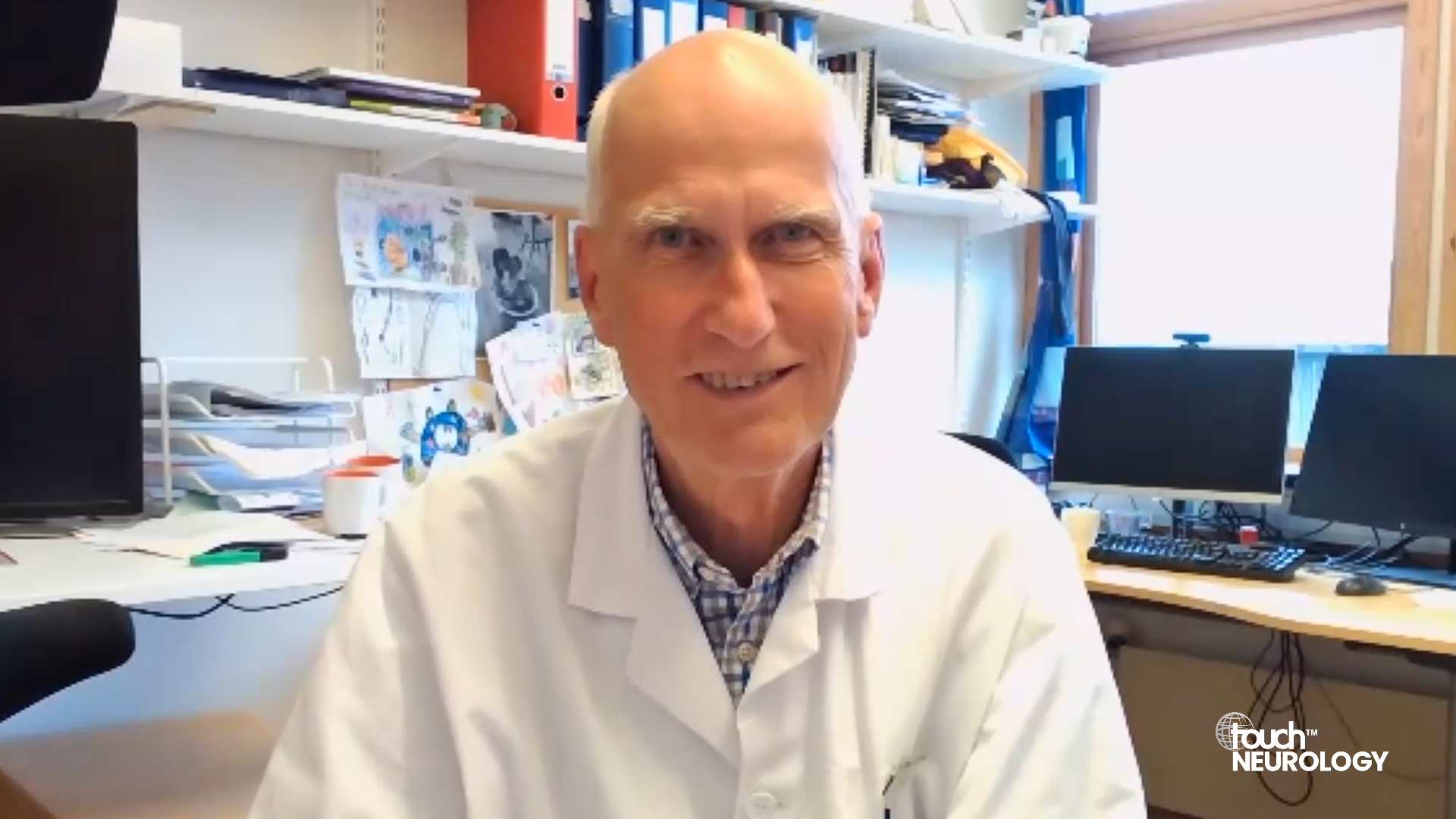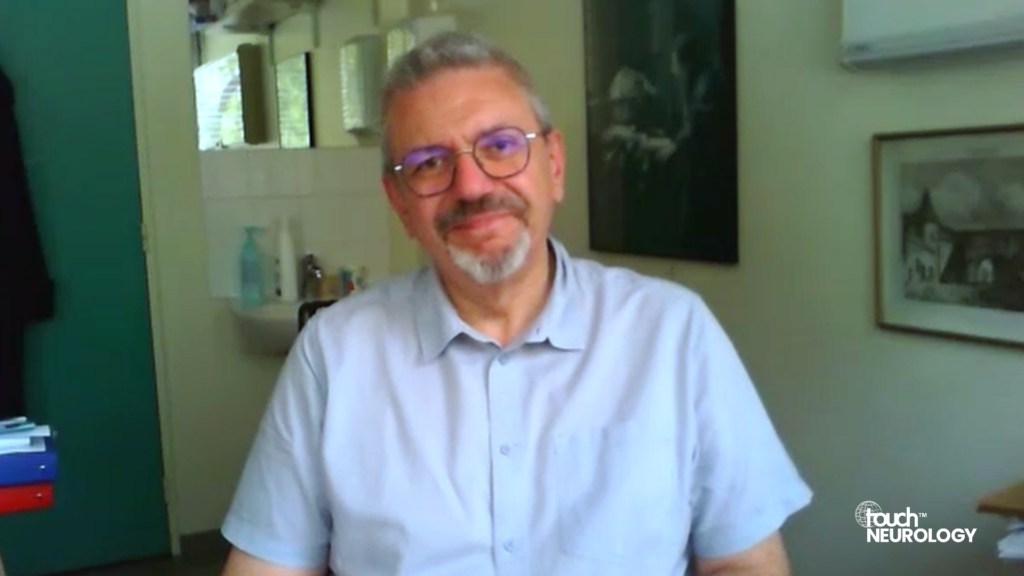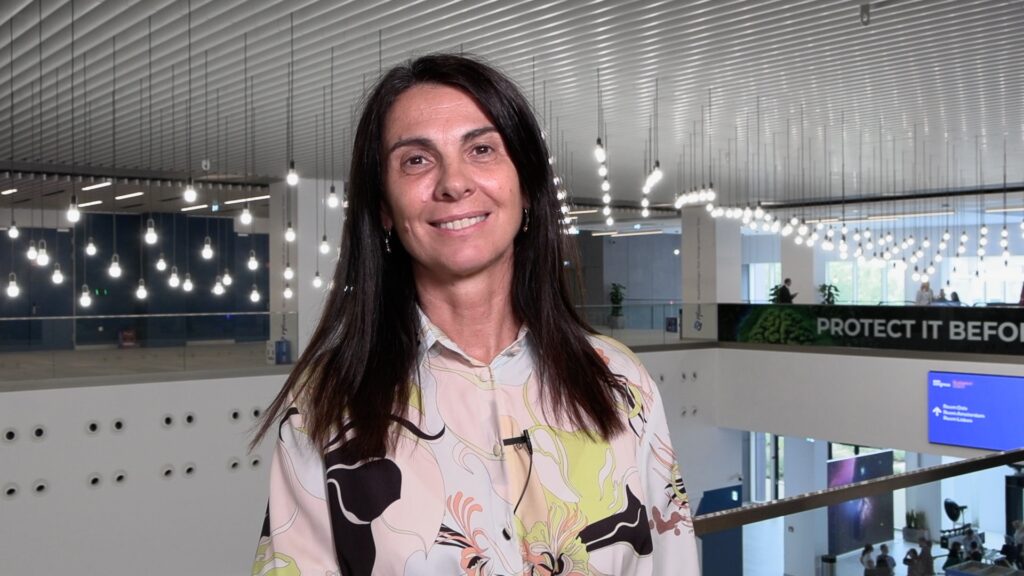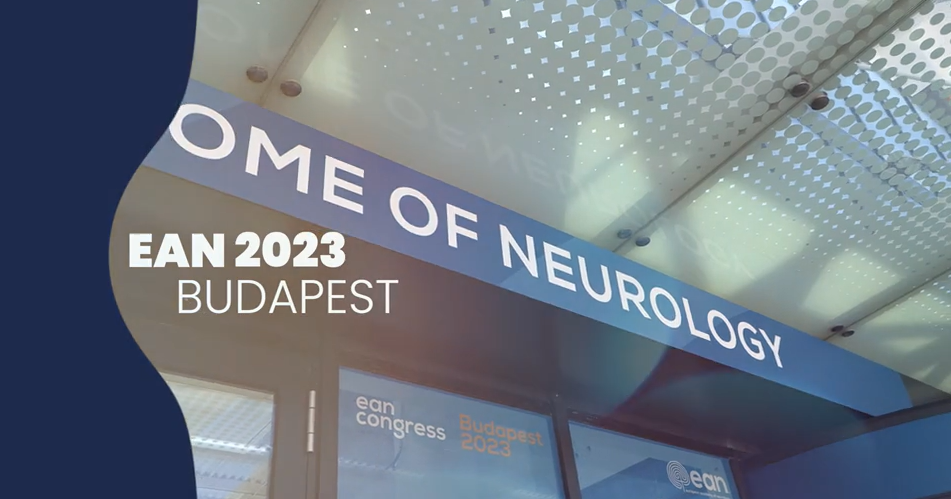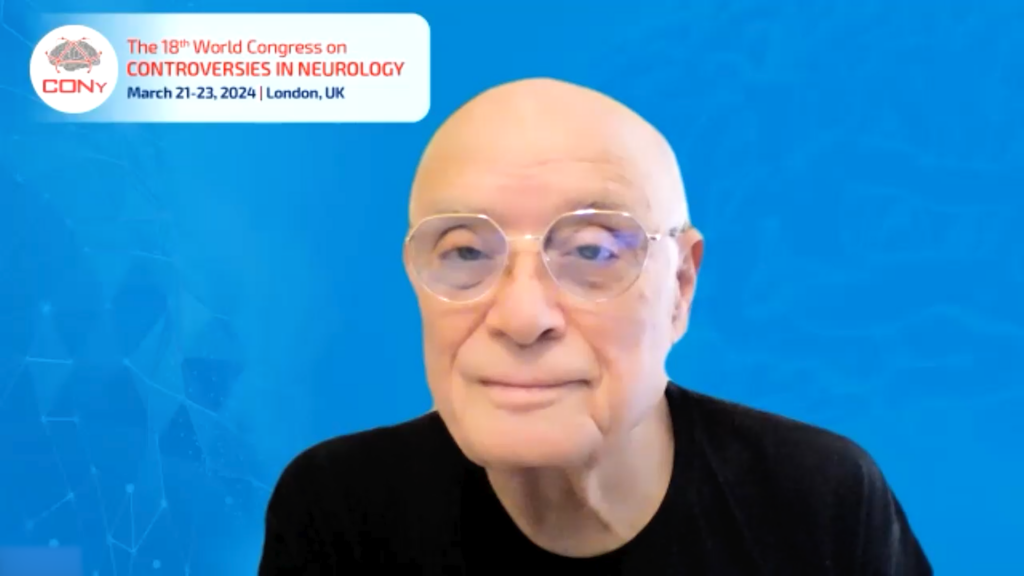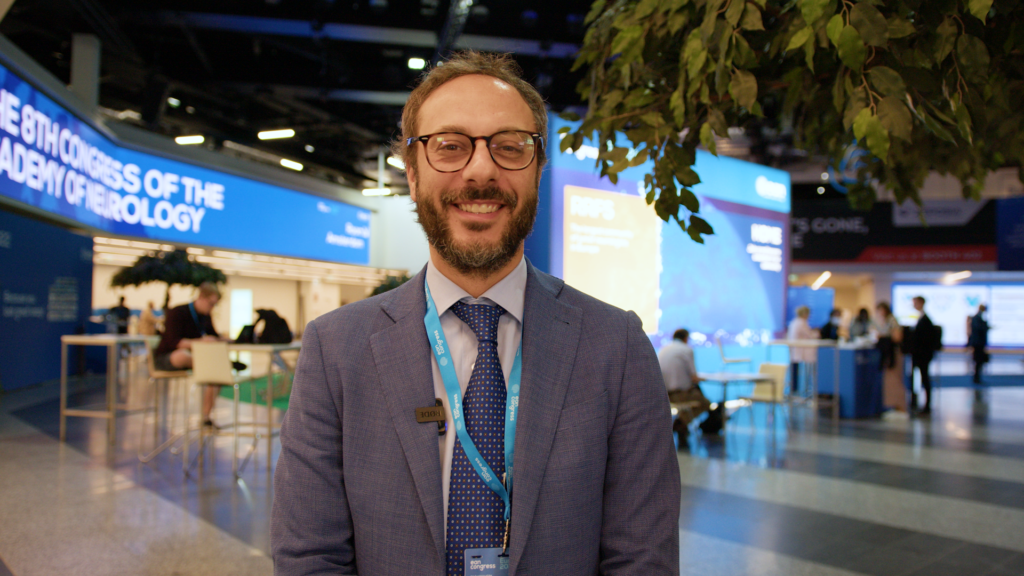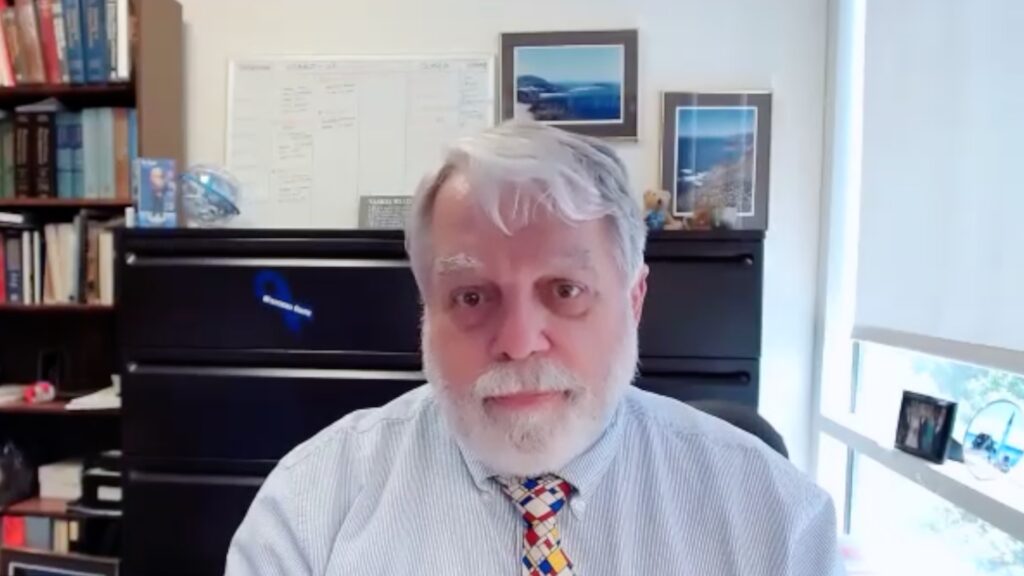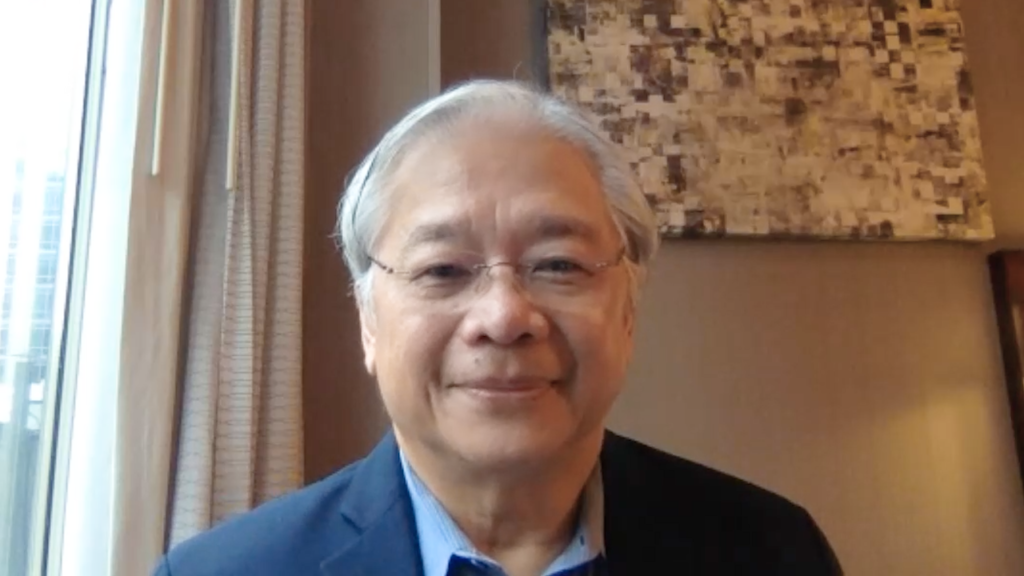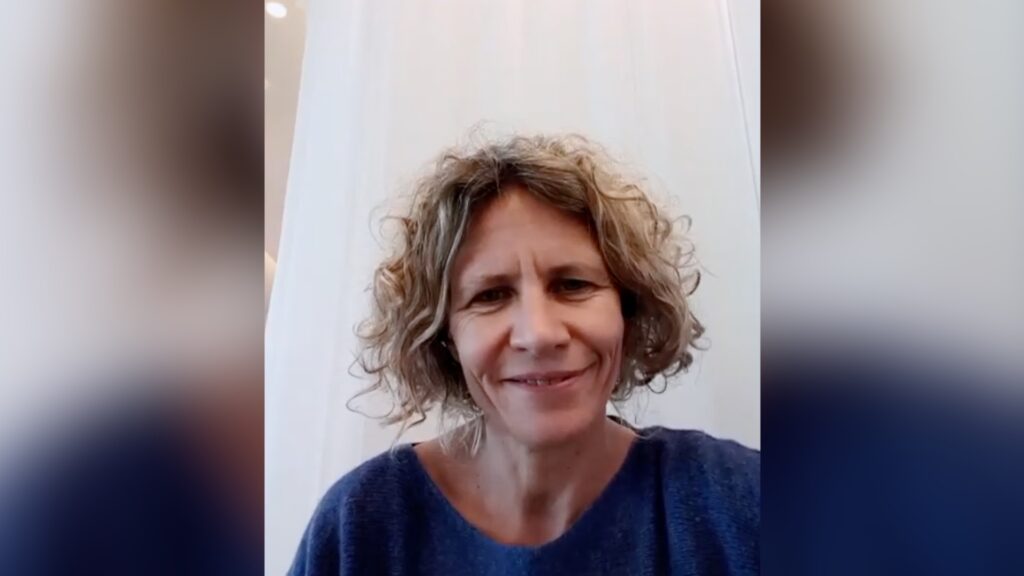Dr Luca Leonardi (Sapienza University of Rome, Italy) summarizes the take-home messages from his study assessing skin biopsy as a marker of disease onset and severity in hereditary transthyretin amyloidosis with polyneuropathy (ATTRv-PN), a treatable disease.
The abstract ‘EJoN: Skin amyloid deposits and nerve fiber loss as markers of neuropathy onset and progression in hereditary transthyretin amyloidosis’ was presented at the annual European Academy of Neurology (EAN), July 1–4, 2023
Questions
1. What are the current unmet needs in the diagnosis and identification of hereditary transthyretin amyloidosis with polyneuropathy? (00:12)
2. Please provide an overview of the rational and main aims of your study (01:00)
3. What was the methodology and study design? (01:23)
4. What were the key findings and results? (02:10)
5. What conclusions can be made, and are there any further studies planned? (03:12)
Disclosures: Luca Leonardi has received grant/research support from Alnylam and Ministero della Salute, and is a member of the advisory board for Alnylam, SOBI and Akcea.
Support: Interview and filming was supported by Touch Medical Media. The interview was conducted by Sophie Nickelson.
Filmed as highlight of EAN 2023.
Transcript
I’m Luca Leonardi from Sapienza University in Sapienza University Hospital.
1. What are the current unmet needs in the diagnosis and identification of hereditary transthyretin amyloidosis with polyneuropathy? (00:12)
I think that there is a great increase in the sensibility of diagnosing ATTRv because there are available treatments which are effective. We have a lot of tools to diagnose it, but the unmet need, I think, is the follow-up of the asymptomatic carrier. And we need biomarkers that are sensitive enough to detect changes in the disease onset. Because it’s hard to say something – sometimes it’s hard to say if there is something going on in asymptomatic carriers and when is the right time to start the treatment in this kind of setting. So we need strong biomarkers in asymptomatic carriers right now.
2. Please provide an overview of the rational and main aims of your study (01:00)
The aim is to investigate the role of skin biopsy in symptomatic subjects and asymptomatic carriers, as a tool to detect a small nerve fibre degeneration as well as amyloid deposition. In order to use these two things as biomarkers of disease progression and disease onset.
3. What was the methodology and study design? (01:23)
The study is quite simple, we just consecutively evaluated the carriers and the patients in the federal centre, who underwent skin biopsy, and we collected this data over decades.. The work is simple because it’s just standard histology, in particular, Congo red for the amyloid deposition and the validated immunofluorescence technique for small nerve fibres. Also staining – and we correlate it with the clinical variables that are quite simple too. For example, PMD, which is a disability scale and the NIS, which is another scale well used abroad for the evaluation of these patients.
4. What were the key findings and results? (02:10)
I found that there is a large when we use skin biopsy as a tool to detect amyloid deposition, there is a very high prevalence of amyloid deposition since the earliest stages of the disease. And so when the disease starts, we can find amyloids in skin, which is quite a valuable tissue – minimal invasive biopsy, then we can perform on these kind of patients. And so this is a tool that we can use to detect the onset of the disease while the skin, the innervation is something that well correlates with disability and disease duration. So probably it’s more a marker of disease progression than we can use during a lead to evaluate the patient or the carrier. We perform a follow-up taking the two – we can decide – we can take a decision about what’s going on in these patients or this carrier.
5. What conclusions can be made, and are there any further studies planned? (03:12)
In conclusion, we can say that skin biopsy as a tool to detect small fibre damage and the amyloid position is a useful tool to be implemented in the follow-up of asymptomatic TTRV patients. It’s a quite simple technique that is available abroad. And provides useful information to take the decision about the start of the treatments, which are quite effective if started early. Right now, we are focusing on the asymptomatic population because it’s the mostly testing phase of the disease, and we are focusing here in Italy on screen biopsy correlated with quantitative sensory testing in a longitudinal study, which I hope very soon will provide some interesting data about the evolution of sensory profiling and skin innervation in this population.

